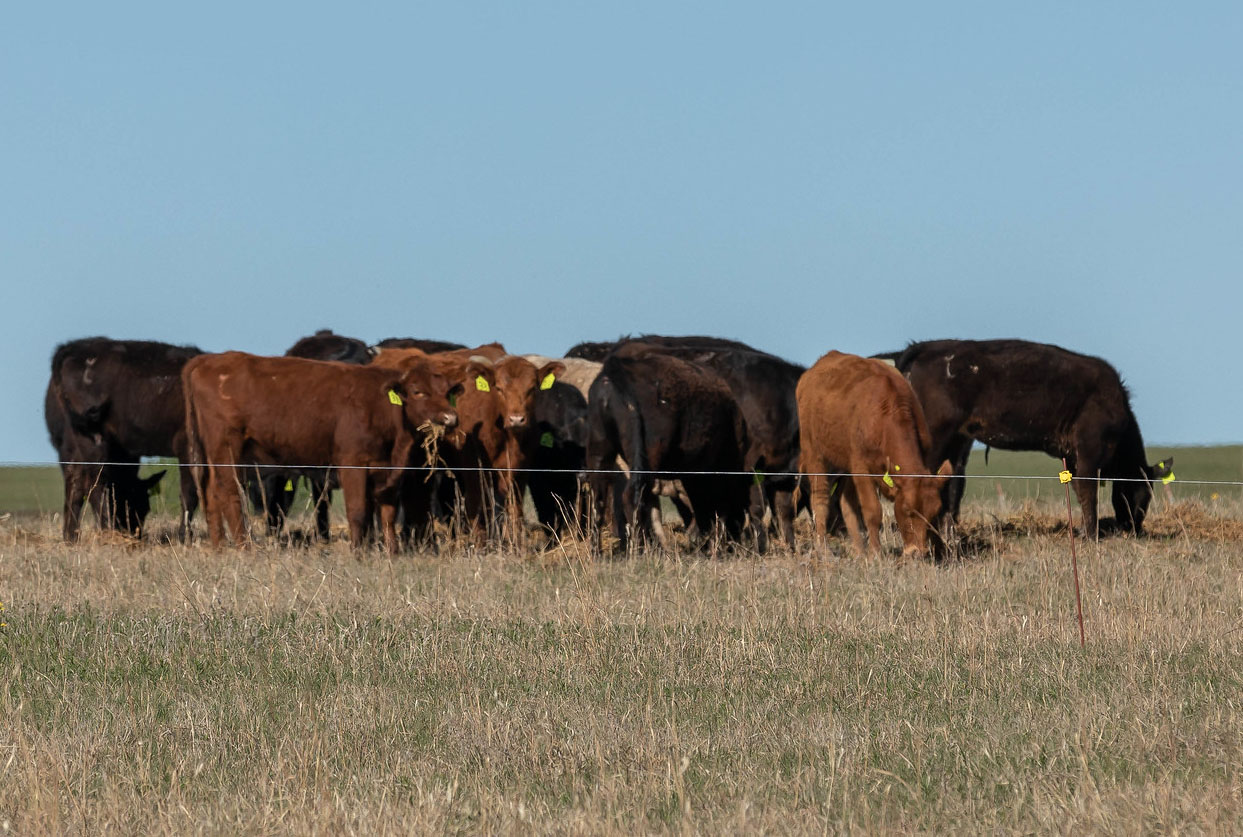
Cattle grazing on early summer pastures | Download this photo.
Cattle Chat: Rotational grazing
K-State cattle experts share the benefits of electric fence in a grazing management plan
May 9, 2023
By Lisa Moser, K-State Research and Extension news service
MANHATTAN, Kan. — For people, there is nothing like the taste of vegetables straight from the garden. And in the case of beef cattle, they prefer to dine on certain grasses in a pasture, according to the experts at the Kansas State University Beef Cattle Institute.
“Cattle tend to consume the most palatable parts of a pasture first, and so by limiting their grazing to a small area they will eat more of the less appealing forages available to them,” said veterinarian Bob Larson on a recent Cattle Chat podcast.
This system is often referred to as rotational grazing in which cattle are moved throughout the grazing season, allowing the grass to rest when the animals are not actively grazing, according to beef cattle nutritionist Phillip Lancaster.
“The forage productivity is not going to be the same across the whole ranch and so producers can use temporary electric fence to vary the sizes of the pastures depending on the recovery time of the grasses,” Lancaster said. “For example, cool season grasses will need a longer rest period in the warmer months of July and August.”
This practice allows for a better utilization of the forage resource, according to the experts.
“Management intensive grazing is not necessarily about improving individual performance of an animal but instead forces cattle to consume a higher percentage of the forage produced,” Lancaster said. “So my carrying capacity goes up or my number of hay feeding days goes down depending on how I manage the number of animals out on the pasture.”
The drawback to this system is that it is going to require more labor to put up the temporary fence, move the cattle and adjust the locations of the mineral supplement and water source, said the experts.
In addition, temporary electric fences will not always hold the cattle in or other wildlife -- such as deer -- out of the pasture because wires can break easily.
“Electric fences make sense for interior pasture fences, but the perimeter fence should be a stronger, permanent fence so that if the temporary fence breaks the cattle aren’t off the property,” said veterinarian Brad White.
To hear the full discussion, listen to the Cattle Chat podcast online or through your preferred streaming platform.

